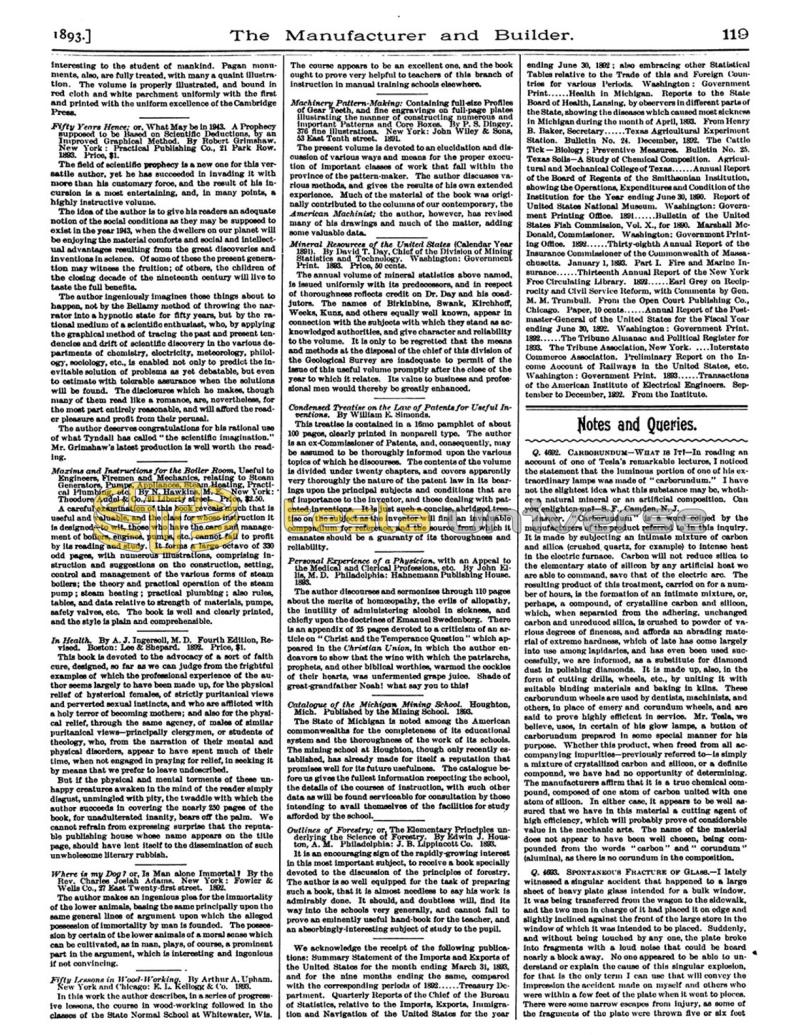
Nikola Tesla Articles
Carborundum - What is It?
Q. 4692. Carborundum - What is It? - In reading an account of one of Tesla's remarkable lectures, I noticed the statement that the luminous portion of one of his extraordinary lamps was made of “carborundum.” I have not the slightest idea what this substance may be, whether a natural mineral or an artificial composition. Can you enlighten me? - S. F., Camden, N. J.
Answer. “Carborundum” is a word coined by the manufacturers of the product referred to in this inquiry. It is made by subjecting an intimate mixture of carbon and silica (crushed quartz, for example) to intense heat in the electric furnace. Carbon will not reduce silica to the elementary state of silicon by any artificial heat we are able to command, save that of the electric arc. The resulting product of this treatment, carried on for a number of hours, is the formation of an intimate mixture, or, perhaps, a compound, of crystalline carbon and silicon, which, when separated from the adhering, unchanged carbon and unreduced silica, is crushed to powder of various degrees of fineness, and affords an abrading material of extreme hardness, which of late has come largely into use among lapidaries, and has even been used successfully, we are informed, as a substitute for diamond dust in polishing diamonds. It is made up, also, in the form of cutting drills, wheels, etc., by uniting it with suitable binding materials and baking in kilns. These carborundum wheels are used by dentists, machinists, and others, in place of emery and corundum wheels, and are said to prove highly efficient in service. Mr. Tesla, we believe uses, in certain of his glow lamps, a button of carborundum prepared in some special manner for his purpose. Whether this product, when freed from all accompanying impurities — previously referred to — is simply a mixture of crystalized carbon and silicon, or a definite compound, we have had no opportunity of determining. The manufacturers affirm that it is a true chemical compound, composed of one atom of carbon united with one atom of silicon. In either case, it appears to be well assured that we have in this material a cutting agent of high efficiency, which will probably prove of considerable value in the mechanic arts. The name of the material does not appear to have been well chosen, being compounded from the words “carbon” and “corundum” (alumina), as there is no corundum in the composition.
